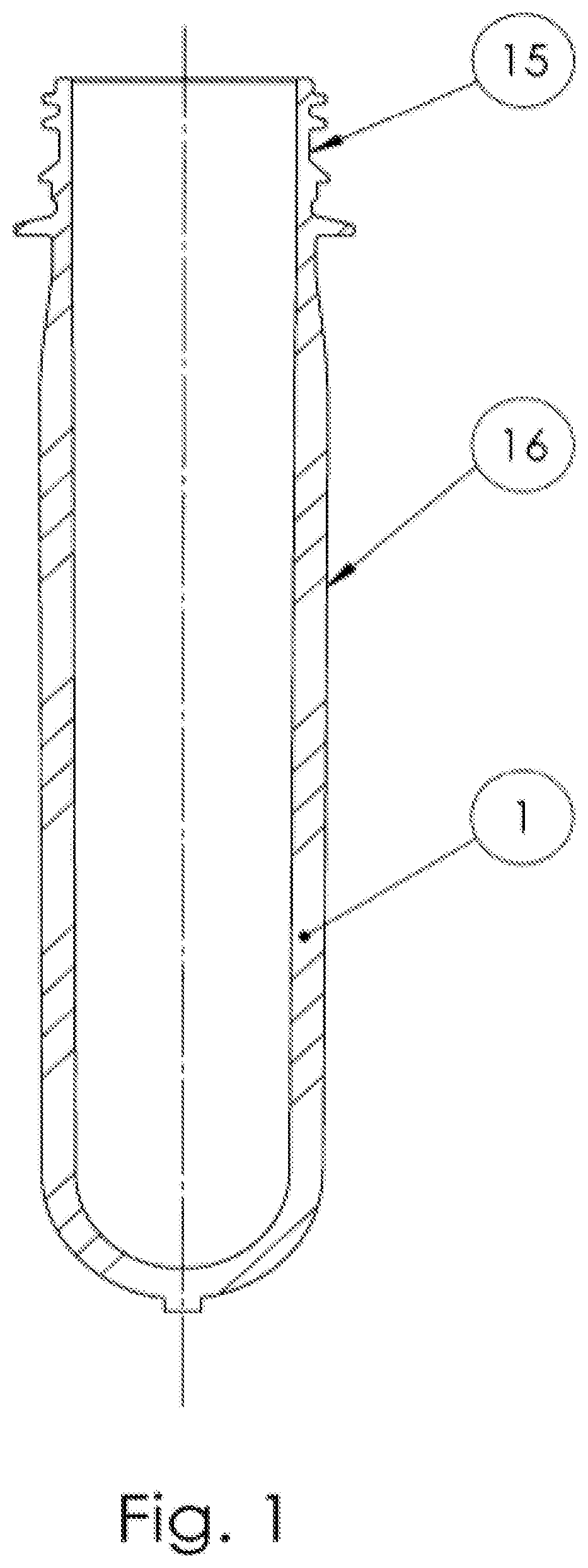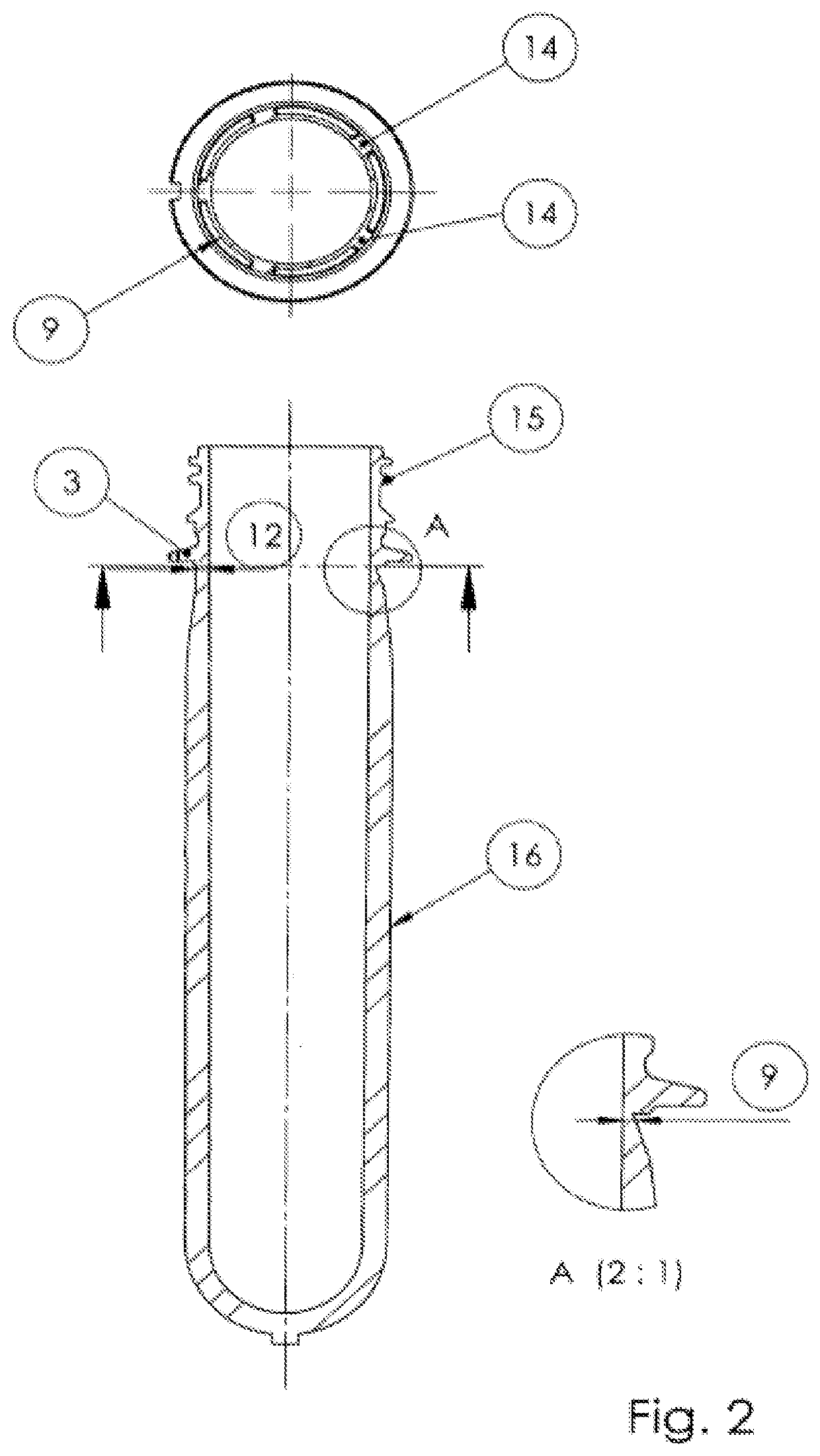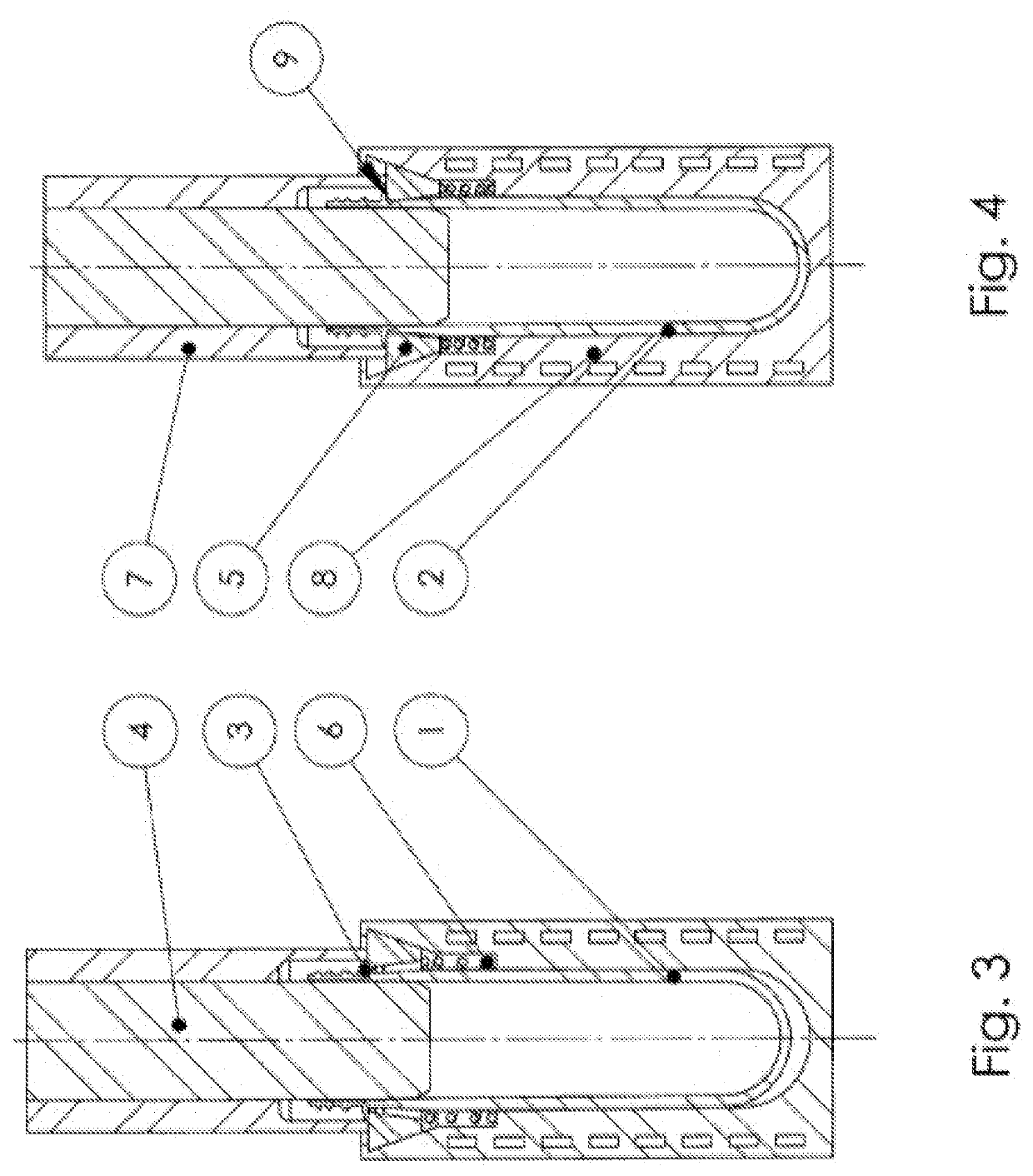Method and device for the production of an optimized neck contour on preforms
a neck contour and preform technology, applied in the field of ##d and apparatus for the production of an optimized neck contour on preforms, can solve the problems of reducing the efficiency of the closure system, . its sealing function, and so as to achieve the effect of reducing the amount of raw materials used, reducing the amount of raw materials, and improving the quality of the preform
- Summary
- Abstract
- Description
- Claims
- Application Information
AI Technical Summary
Benefits of technology
Problems solved by technology
Method used
Image
Examples
Embodiment Construction
[0031]FIG. 1 shows a preform produced according to the prior art. Said preform may have a transporting ring 3 for further container-production steps—it may also be possible in the future, however, to dispense with said transporting ring 3, since it is possible, if appropriate, to grip the region between the ribs of the preform. The wall thickness in the region beneath the transporting ring 3 here has a similar wall thickness 12 as the threaded region 15. On account of the risk of the melt freezing, preforms according to FIG. 2, which are optimized for the blow-molding process by having reduced wall thicknesses 9 beneath the transporting ring 3, can be realized by injection molding only with limited success, since it is then no longer possible for the holding pressure, which counteracts the shrinkage of the preform during the cooling process, to act in the critical regions.
[0032]This invention discloses three solution-related approaches as to how the preform in FIG. 2 can be produced...
PUM
| Property | Measurement | Unit |
|---|---|---|
| temperature | aaaaa | aaaaa |
| temperature | aaaaa | aaaaa |
| thickness | aaaaa | aaaaa |
Abstract
Description
Claims
Application Information
 Login to View More
Login to View More - R&D
- Intellectual Property
- Life Sciences
- Materials
- Tech Scout
- Unparalleled Data Quality
- Higher Quality Content
- 60% Fewer Hallucinations
Browse by: Latest US Patents, China's latest patents, Technical Efficacy Thesaurus, Application Domain, Technology Topic, Popular Technical Reports.
© 2025 PatSnap. All rights reserved.Legal|Privacy policy|Modern Slavery Act Transparency Statement|Sitemap|About US| Contact US: help@patsnap.com



